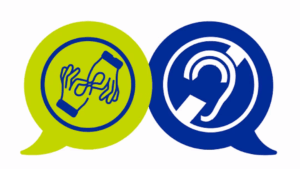When it comes to translation, the nature of each project varies greatly. For example, concepts and messages are very important in marketing and advertising. Communicating the nature of these messages in different languages and cultures is often more important than simply translating them literally. Although professional document translation will deliver clear, correct text in your target language, the result may lack the character, style or effectiveness of the original. “Transcreation” can solve this – going beyond translation by taking the concept, not just the words; and rewriting it for the target market.
Why transcreation matters
In the globalized world, many businesses are aiming to gain brand recognition around the world. And when it comes to building global appeal for your brand, getting your message wrong is no laughing matter. A business might spend thousands on research, focus groups, design and development. This time and effort can go to waste if your message doesn’t translate well to a certain audience.
Have you ever gone on vacation and found signs or menus where the translation needed some improvement? Bad translations are almost as popular as cats on the internet. There are some hilarious, puzzling and often downright rude errors. Even global giants such as Coca-Cola, Ford and Ikea have been under fire for their translation mistakes.
Marketing and advertising in particular are tricky areas for translation. Creative teams think about connections and feelings of familiarity when developing campaigns to sell products. They rely on nuances of language, evoking memories and strong emotions. They create connections by using national, regional or local references that keep products and services at the forefront of people’s minds. Even the most intelligent translation software is no substitute for local knowledge of cultural significance. Brand recognition, when done right, becomes a part of the culture.

Transcreation versus translation
Translation aims to convey the message of the source text in a new language, usually sticking closely to the original. However, the transcreation process is a bit different. It looks at the intent, style, tone and context of the message. Experts with knowledge of the local language, imagery, associations and connotations work through the whole process. They ensure consistency for the brand but also observe local requirements, expectations and customs.
Strong and powerful images in one region or country could have an unpleasant connotation, or even be illegal, in another. Populations of one country could remember happy times when they hear a particular song; but others could associate it with a national crisis. Different cultures even favor certain colors or shapes for logos; prompting businesses to create new logos to appeal to different markets.
Transcreation for marketing
Translators must use discretion when determining how to handle certain documents. For example, they translate contracts and legal documents as literally as possible. With complex phrasing and specific terms and conditions, there is no room for creativity. On the other hand, a marketing translation is completely different. Transcreation for marketing is different. Content creators often change words or phrases into something completely different to convey the desired message. Literally translated, these words or phrases may bear no resemblance to each other. But they will spark the required connection in the target market. The end result is in line with the original intent, tone and context of the message developed by the creative team.
Transcreation for business
The transcreation process is essential for international marketing and advertising messages; but it’s not exclusive to these sectors. Any international business should ensure their messages aren’t lost in translation.
Weeks or months of hard work go into company handbooks, health and safety guides and business strategies. Employees need to understand this information fully in order for the business to succeed. The aim is for the reader to absorb the information. A document that hasn’t been through the transcreation process could be ineffectual. The reader might laugh at a serious document, or even take offense at negative connotations.
The transcreation process is much more than translating a document and checking for errors. Experts carefully analyze source text materials for the original meaning, target audience, intended message and desired outcomes. The team produces a comprehensive package of glossaries, descriptions and briefing documents to ensure that they tailor the finished product to the target audience. They take into account linguistic, cultural, educational and technical standpoints.
Appointing a professional transcreation company could mean the difference between inviting your customers to enjoy “finger lickin’ good” chicken, or suggesting they “eat their fingers off”; which is exactly what KFC did when they expanded into China…Could you afford to make a mistake like this?
If you want to be sure your translations are well transcreated and localized, contact us!




